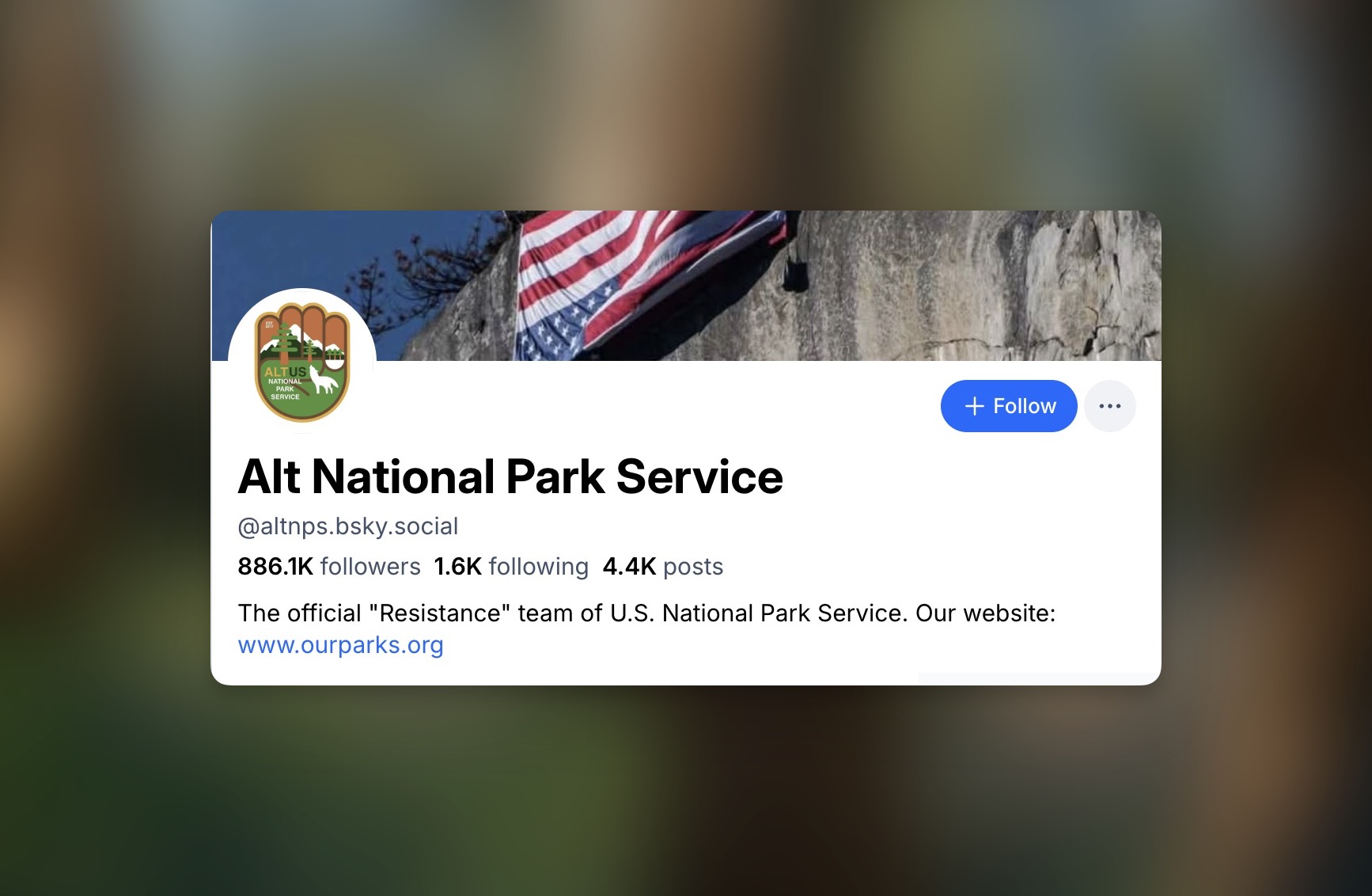A couple quick things to note:
I started most of these charts from May 2020 — March/April were either zero or super depressed numbers for almost all parks. May was the beginning of visitation coming back.All of these charts are made with publicly available data from the National Parks Service, and focus on “recreation” visits.
At the top level
All the parks saw decreased visitation. Most parks were completely closed in April (and some into May), which made it almost impossible to reach 2019’s numbers. However, many experienced record summer and fall visitation.
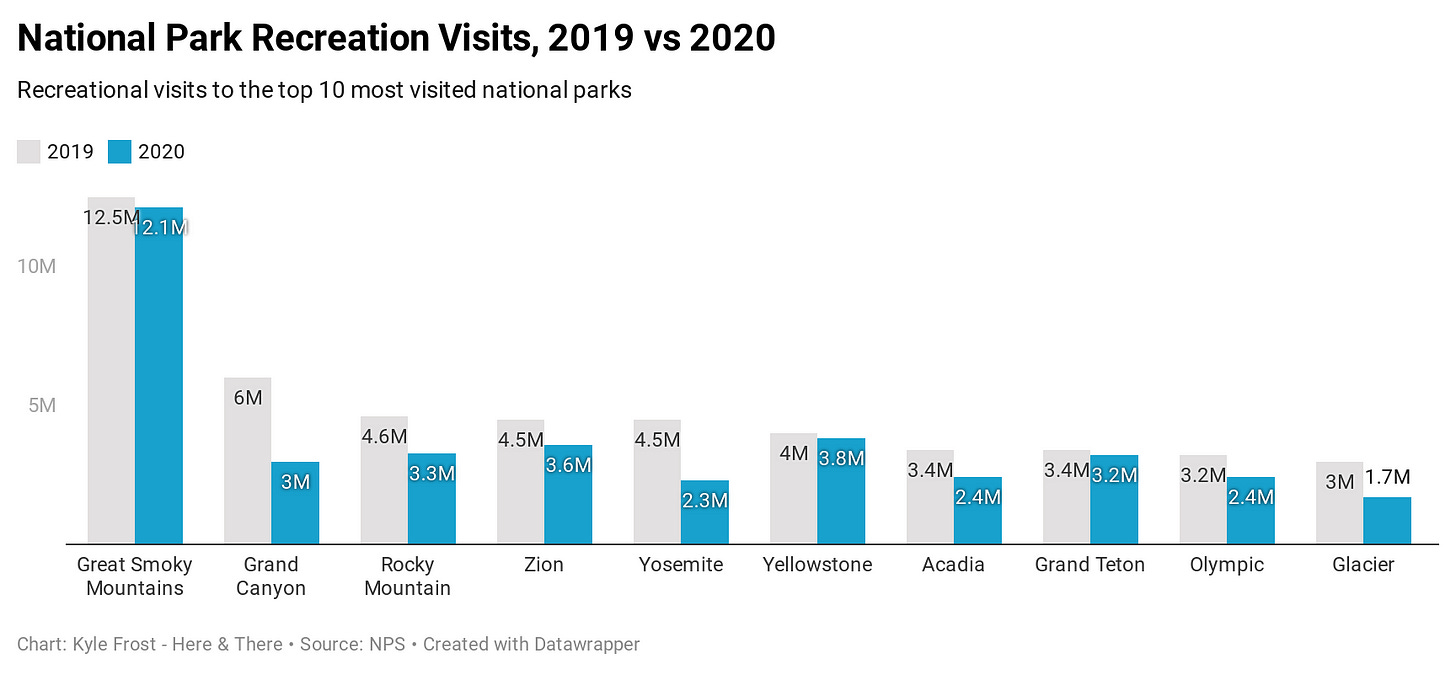
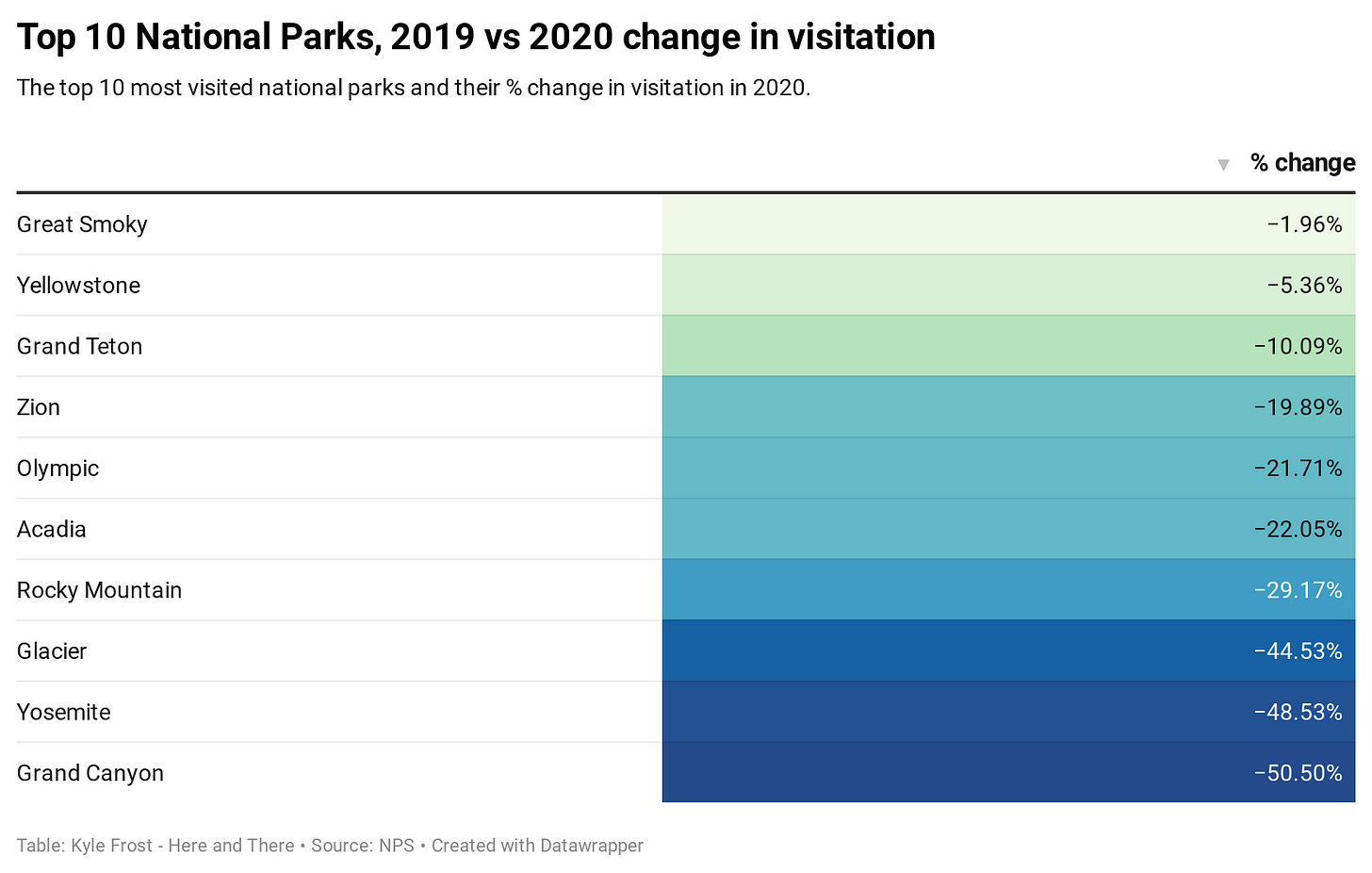
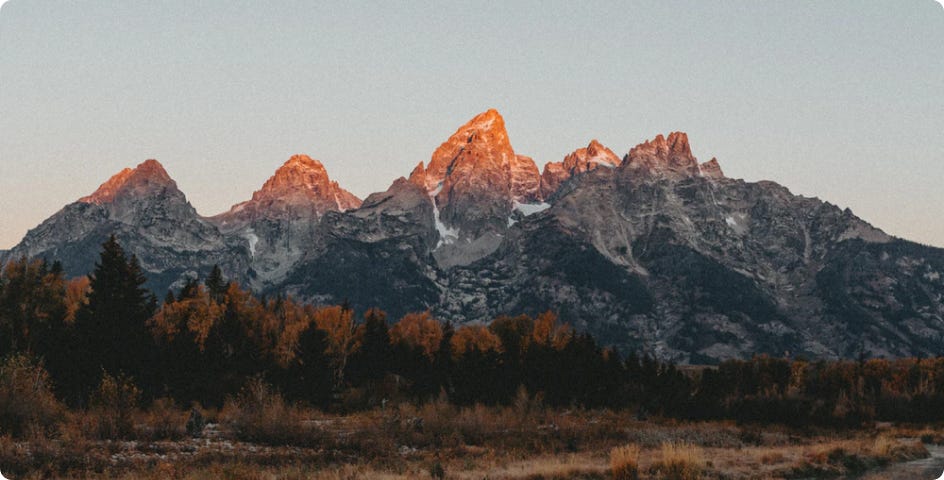
Why did Yellowstone & Grand Teton do well?
Among the most popular national parks, Yellowstone and Grand Teton did well, seeing only a modest** 5% and 10% decrease respectively year over year (YOY)**. After a tepid spring, Yellowstone saw all-time records for visitation every month July-December. What makes this more significant is that these records were reached with international visitors at near-zero — they can account for up to 25% of national park visitors in a normal year.
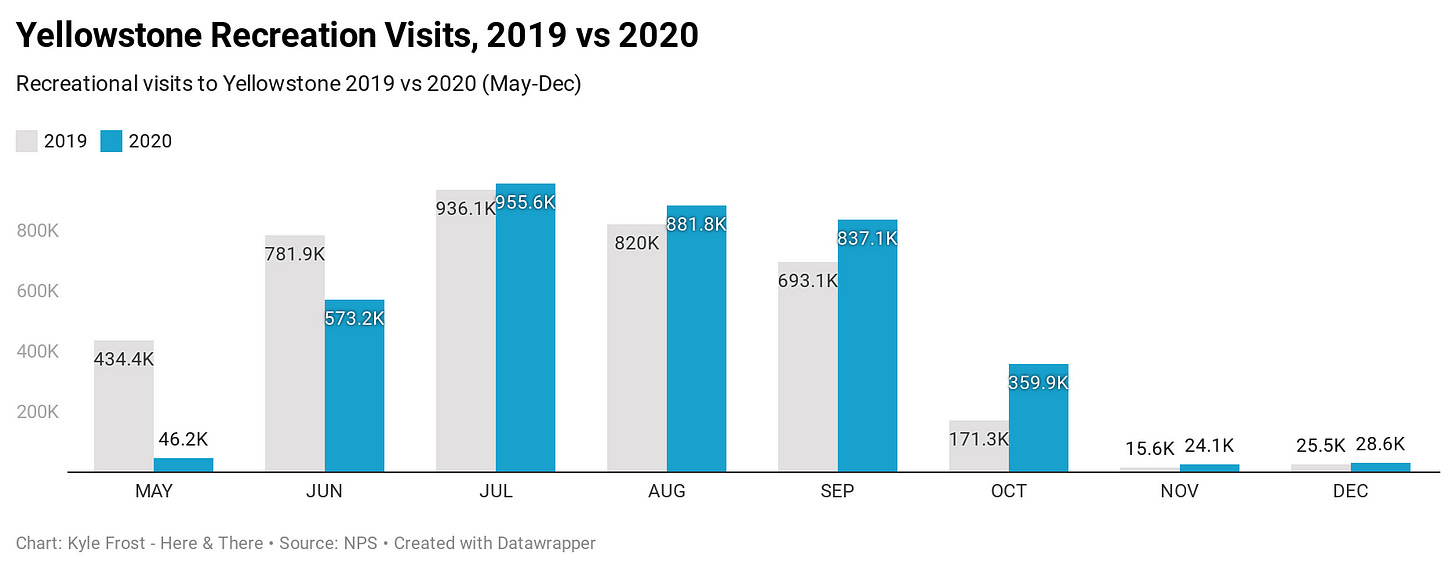
Absent the crowds of European and Asian tourists, Yellowstone’s boardwalks and roadways were still packed throughout the latter part of the year. Visits in October were up 110%! Both of these parks benefited from being popular parks for road-trips — we know that RV sales and rentals were through the roof this year, and cooped up folks were itching to hit the road.
With park lodging closed, many visitors were pushed out to gateway towns. Here’s Wendy Swenson, Marketing Director at Destination Yellowstone:
*West Yellowstone was fortunate to have the level of visitation we did from June-October, 2020. Less lodging within Yellowstone Park also pushed visitors out to gateway communities. Most months were above 2019 numbers with August and October breaking records for numbers of visitors…Our retail and restaurants had great summers, some setting record sales. *
While great news for local economies like West Yellowstone and Jackson, there is some concern about what this could mean for visitation going forward. Traffic on Yellowstone’s roads increased due to an influx of passenger car vs tour busses (the same phenomenon happened in Zion and other places).
Contrary to prevailing anecdotes in past years about “rude” international visitors, these new domestic visitors tended to be “impatient, rude and sometimes threatening to our frontline staff. They also were more disrespectful of our public lands, often camping in non-designated areas and leaving more trash”, according to Destination Yellowstone. Travel and other issues at the federal level also resulted in lack of J-1 visas — meaning many local businesses were understaffed for the season.
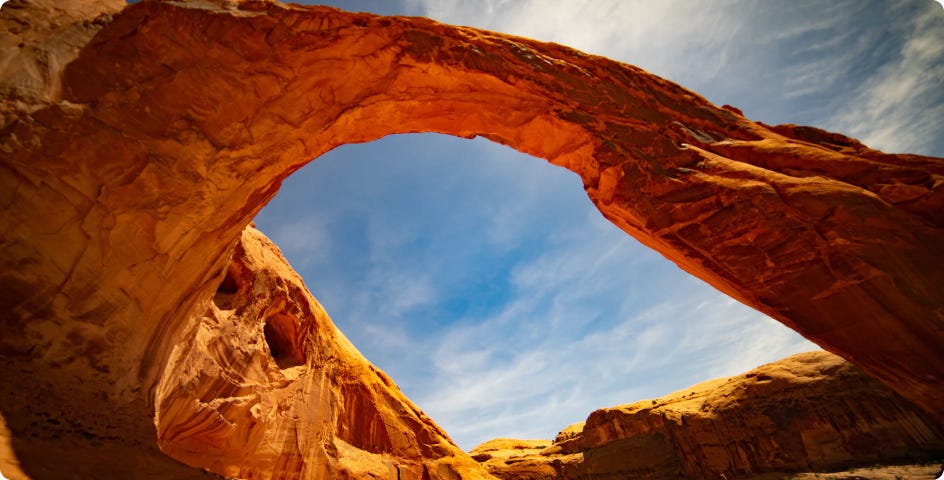
What happened in Utah?
Utah had a massive rebound in the fall. Parks like Zion, Canyonlands and Arches saw massive YOY increases during the fall months. In November alone, Zion saw a 38% increase in visitation over last year, Canyonlands had a 67% increase, and Arches a 41% increase.
Why the huge increases? Elaine Gizler, Executive Director of the Moab Travel Council says it is due to increased (and repeat) visits from Utah and Colorado residents, as well as road trips from Southern California and Texas. Campaigns like “Find Your Space” from Greater Zion may have helped. A poor start to the ski season didn’t hurt either, as outdoorists sought out desert escapes later in the year than usual. This fall surge softened the blow for many businesses dependent on tourism traffic in gateway towns like Springdale and Moab. Gizler had this to say:
Our businesses were hit hard in the spring of 2020, however, they made a slight recovery in the fall so they were fortunate. The Moab Area Travel Council has been focusing on Recreate with Respect, educating visitors before they arrive in Moab. We want visitors to know that we cannot re-create what we have — it is precious and we need everyone to visit with care.
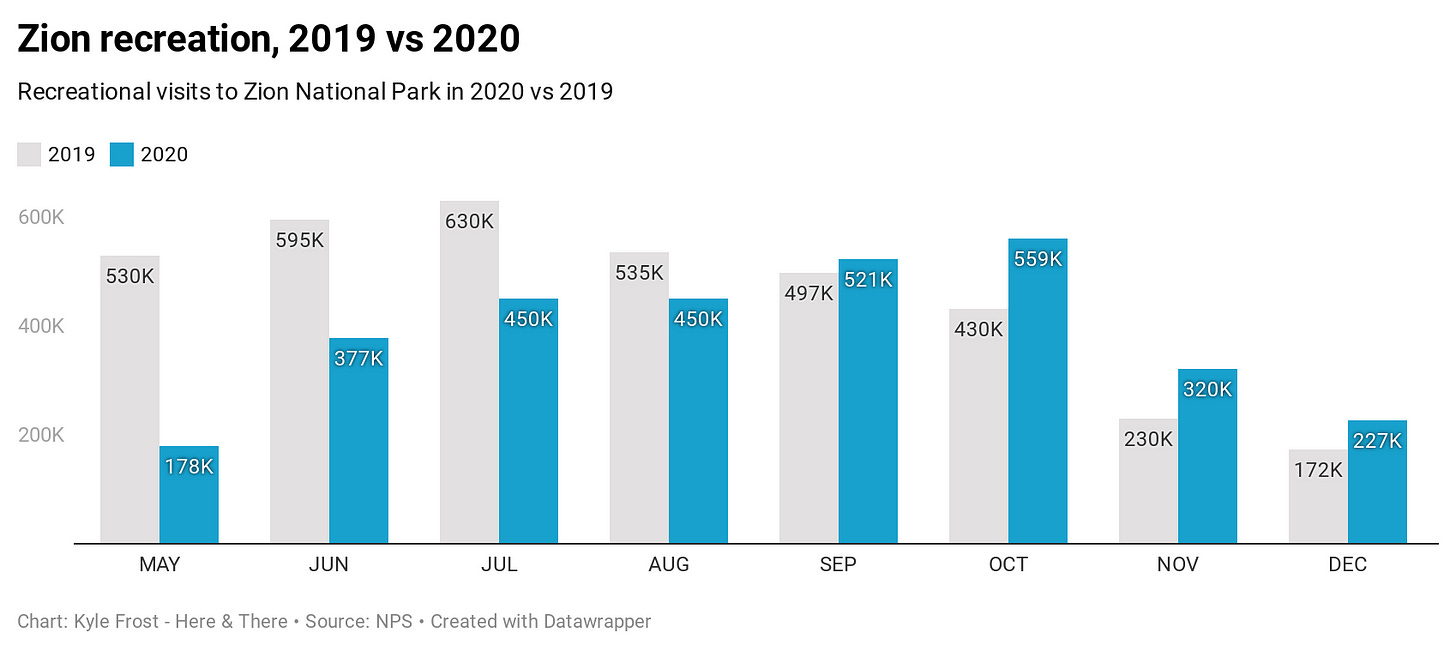
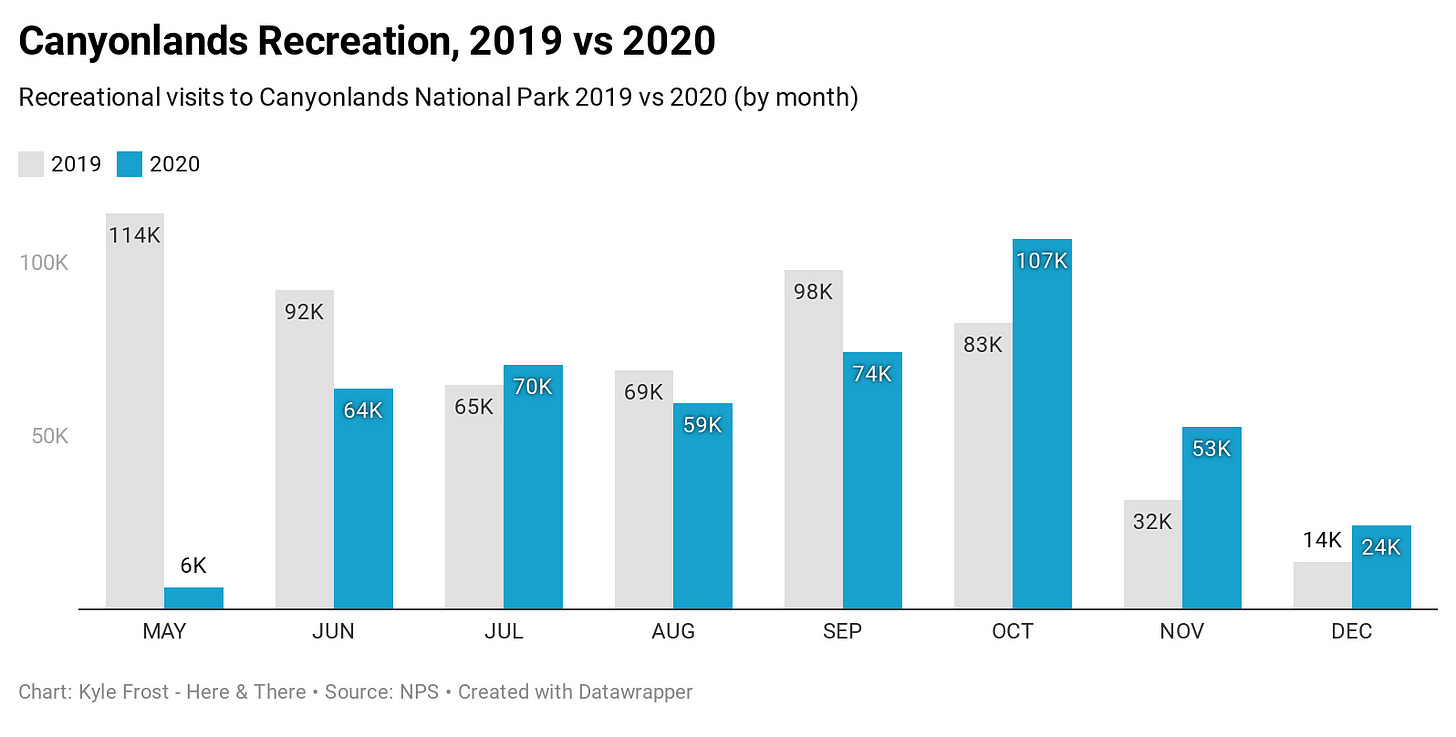
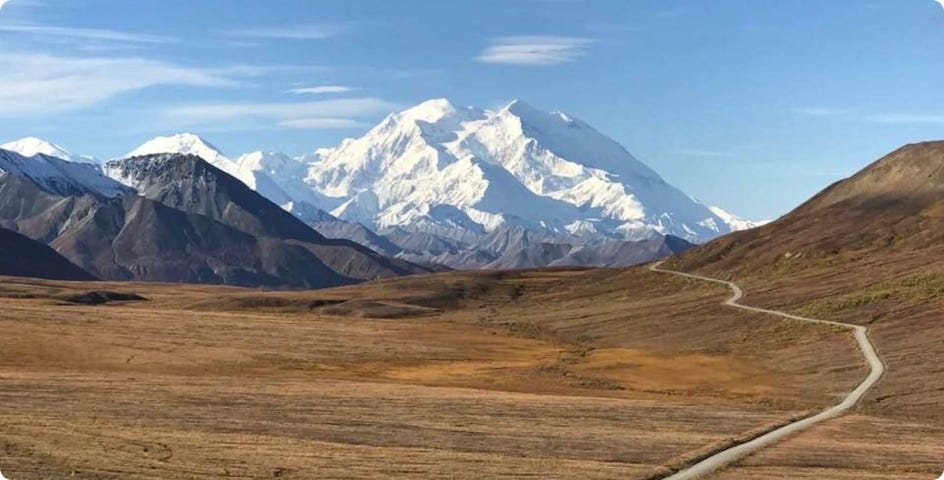
“Fly to” destinations and more remote parks saw large decreases in visitation
We saw some recovery (or record numbers) from parks within driving distance of metros or on popular road-trip routes. The “fly to” destinations did not fare as well. In particular, Alaska and Hawaii got absolutely shafted this year between all the cruises getting cancelled and most inbound travel decreasing to a trickle. In Hawaii, where tourism accounts for 25% of the economy, total statewide room revenue was down 77% year-over-year.
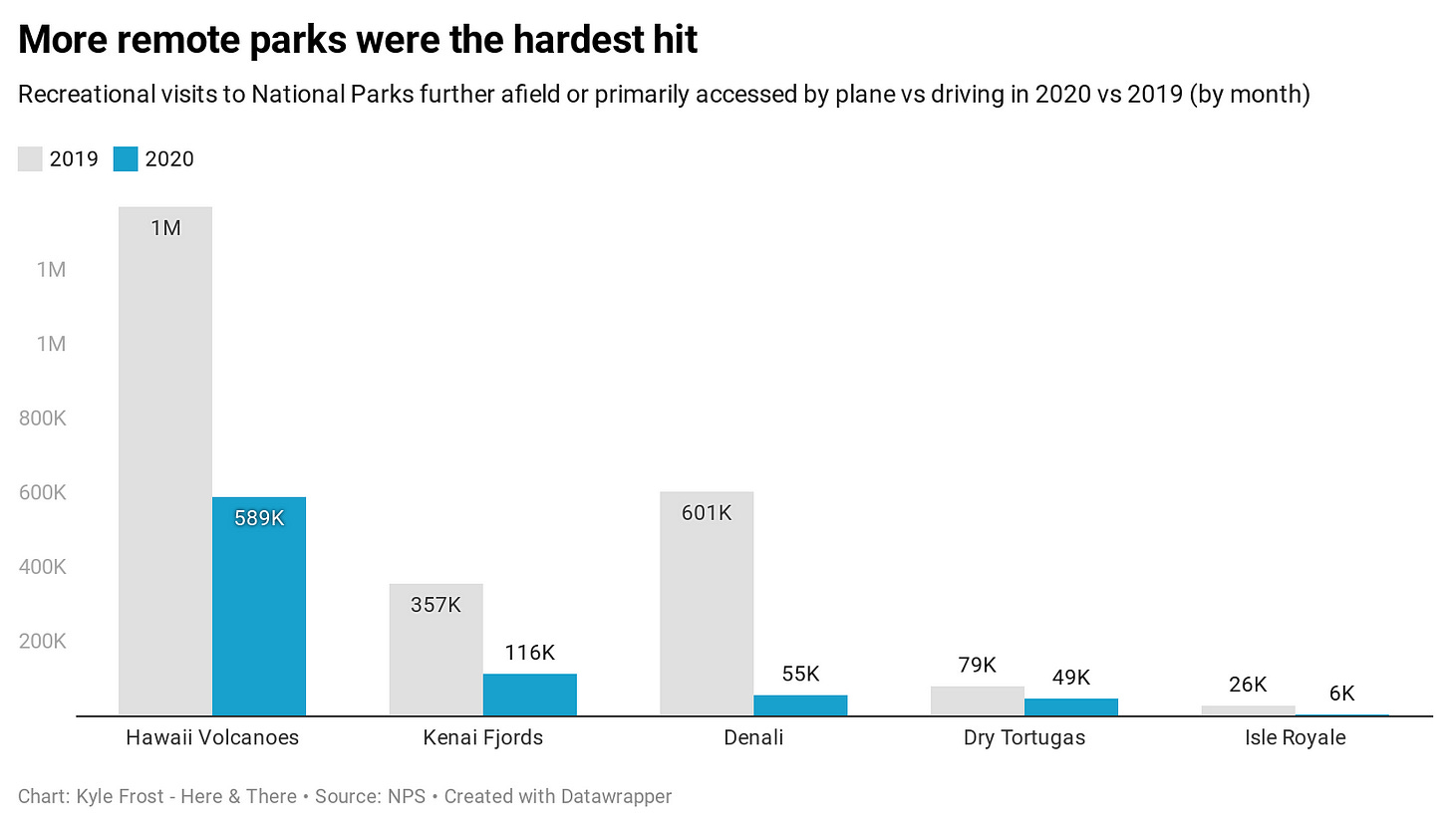
If there’s one chart that sums it up for Alaska, it’s the visitation for Denali this year. Alaska lost almost all of its expected 1.3 million cruise visitors in 2020, and inbound visitation from flights was down as well.
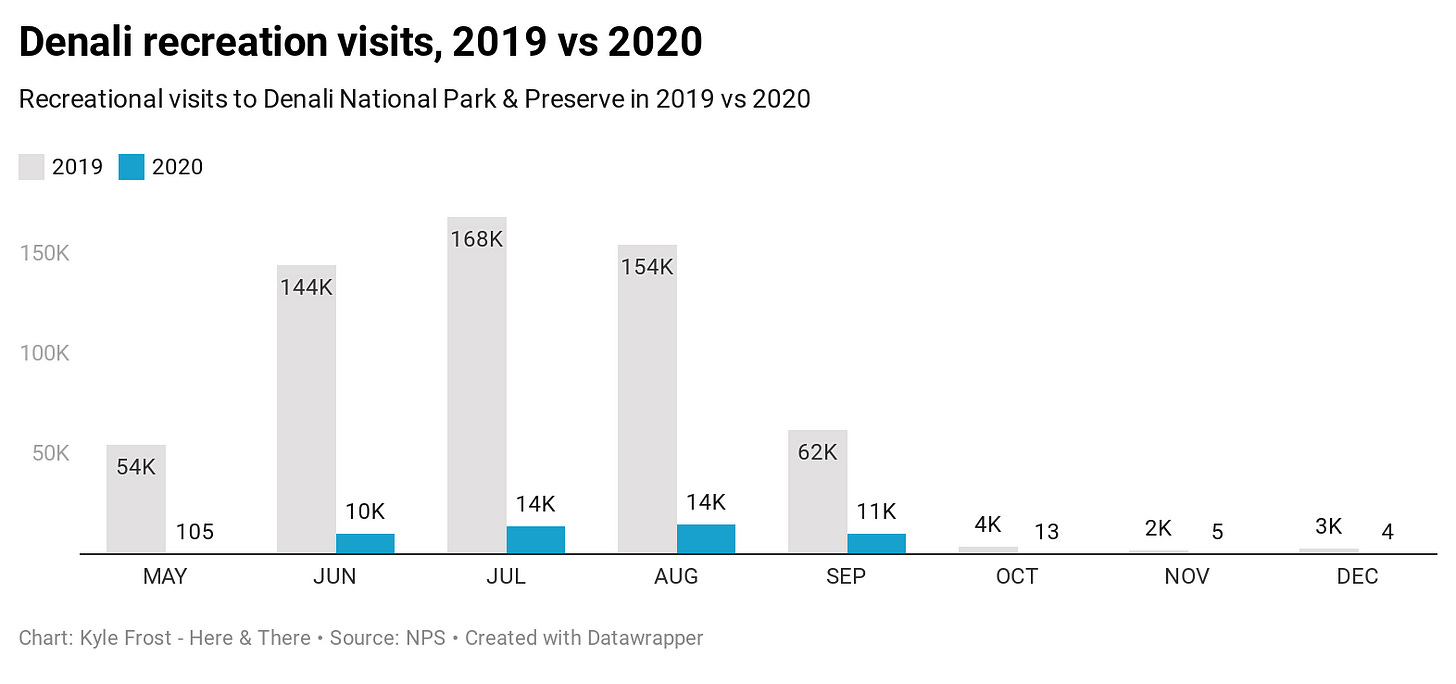
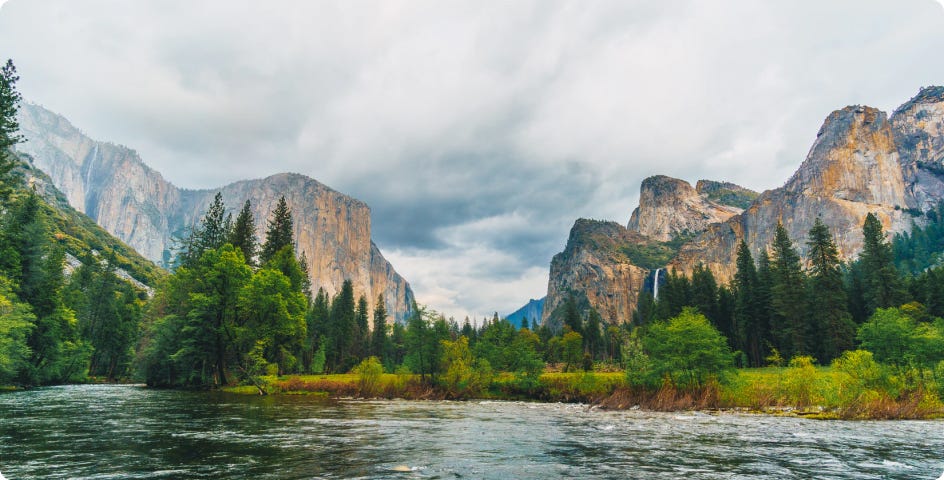
A one-two punch in California
After longer closures than in other states, CA park visitation looked to be on a recovery curve…and then the 2020 fires happened. You can see this affect particularly in the Sequoia numbers, where July and August looked good and then September numbers tanked significantly. Yosemite was also operating under a reservations system for most of the year, which kept numbers down.
It was a mixed year for nearby communities — even as Yosemite numbers remained depressed, Californians were still flocking to the outdoors over the summer in record numbers. I asked Brooke Smith from Visit Yosemite Madera County a few questions about their 2020:
Yosemite saw a ~50% decrease in visitation from 2019 — how has this trickled to affecting nearby gateway communities and businesses?
The impact of the temporary day-use reservation system in Yosemite last summer had a tremendous impact on the businesses in the park’s southern gateway town of Oakhurst. On average, occupancy down more than 35%. However, 10-minutes away in nearby Bass Lake, the resorts, trails, beaches, and recreational areas experienced record-setting visitation. It was one of the best summers we’ve experienced in years.
The fires were a bit of a double punch — has this tumultuous year changed the way nearby communities think about their heavy reliance on tourism (and Yosemite in particular)?
As in years past, this monster fire rocked our community and our travelers. Evacuations, hazardous smoke, National Park closures, and road closures affected both travelers and residents. Unfortunately, the late summer in America’s west is a fire season. It is a reality we are learning to live with, working to mitigate, and changing the way we communicate with visitors.
Over the past five years, the most significant change has been our communication, providing an understanding that a fire emergency is a real possibility in the late summer, and fall. We must encourage visitors to plan ahead, stay safe, check online resources before they travel, and understand that smokey air quality may impact their trip.
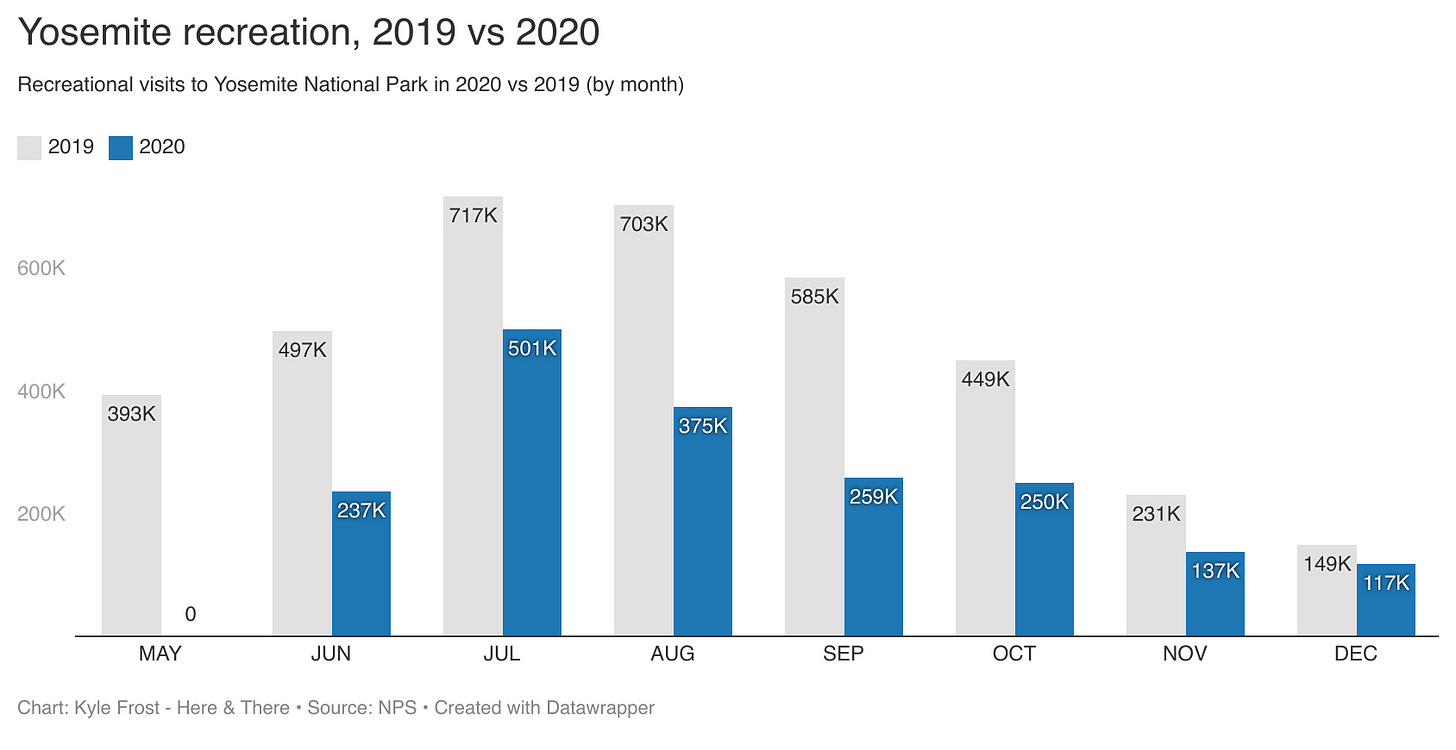
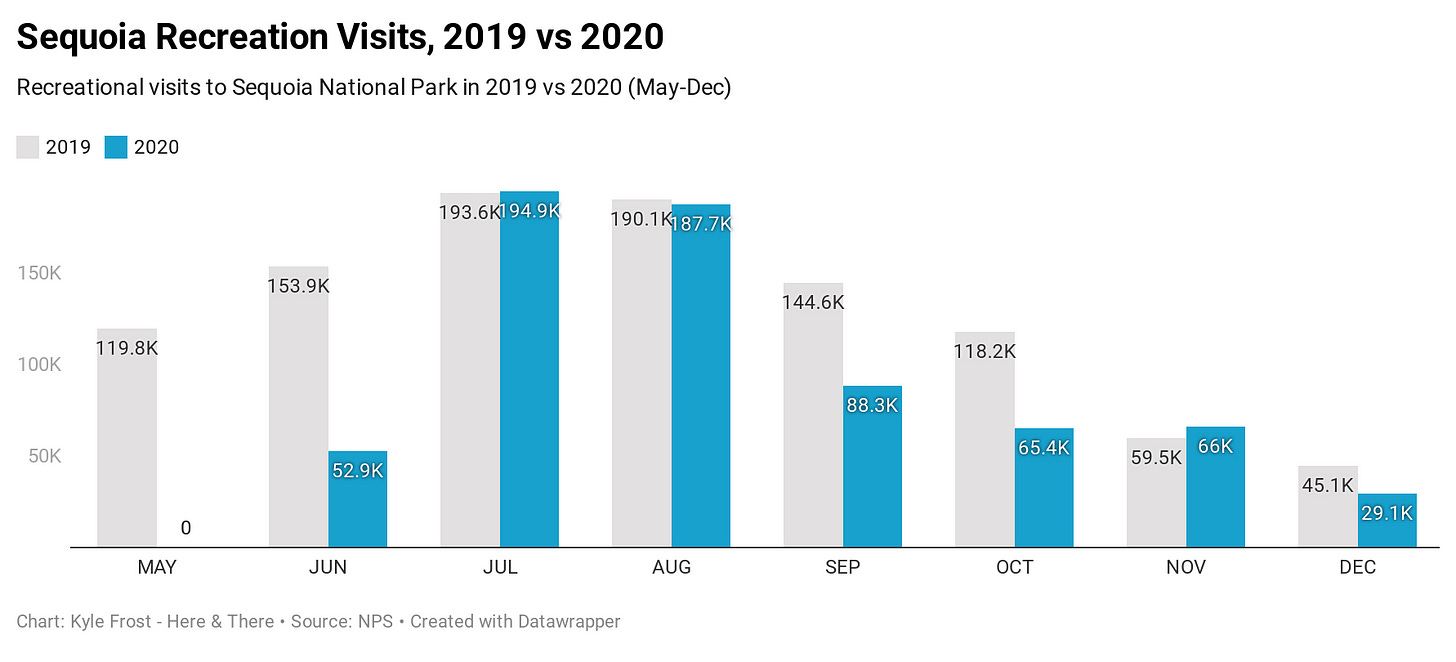
Many people might think that the decreased visitation was good for our parks.
As with most things, there are trade-offs. In addition to the economic impact in surrounding communities, some parks will take a massive revenue cut from visitor fees this year. Assuming parks (on average) saw ~20-25% less visitors this year, that’s north of $70 million in lost revenue. For some parks, it’ll be an even heavier hit — because 80% of fee revenue stays in the park where it is collected, and 20% goes to parks that don’t collect fees, decreases won’t be softened by better performance in other parks.
Additionally, while visitation over the year decreased, many parks were seeing record summer numbers, but with a significantly reduced staff, putting a massive strain on park resources, facilities, and personnel.
At the end of the day…
It was a wild year. After a rough spring, we saw positive signs of recovery in the outdoors — but this surge came with trade-offs. Record visitation often meant record trash, record violations, and record damage to ecosystems. The funding of the Land and Water Conservation is a positive from 2020, but it’ll take more to effectively mange and educate this new segment of visitors. The infrastructure of parks (and nearby towns) has already struggled to address more gradual increases over the last few years. If we see international visitors return in 2021 (who knows 🤷♂️) as well as these new visitors…there are going to be a lot of issues.
Figuring out how to educate new outdoorists and get them to care about the places they’re visiting on a micro level remains one of the greatest challenges the industry faces. Public lands and national parks have broad support across the country, but there remains something missing in getting all visitors to remain respectful of the lands they actually use.

